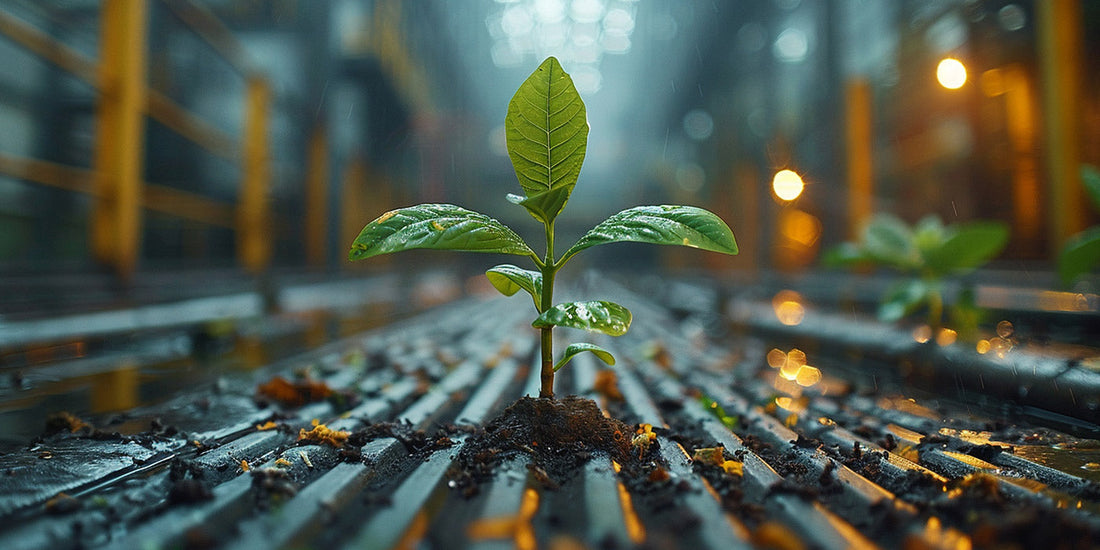
From Green Revolution to Regenerative Agriculture: The Evolution of Indian Farming
Share
India’s agricultural journey witnessed a landmark shift in the 20th century through the introduction of high-yielding varieties (HYVs) of wheat and rice. Known as the Green Revolution, this movement was one of the most transformative developments in modern agriculture. It turned India from a food-scarce nation into one that could not only feed its growing population but also begin to build food security.
Key states like Punjab, Haryana, and Uttar Pradesh led the transformation, recording unprecedented increases in food grain production. This period also marked the beginning of agriculture industrialization in India, with large-scale use of modern tools, chemicals, and irrigation.
The Green Revolution introduced high-yield crops that needed less land, were resistant to diseases, and produced more grain. These innovations significantly reduced spoilage, improved productivity, and changed the face of Indian agriculture forever.
But while the Green Revolution was a solution to urgent food crises, it also brought challenges—especially environmental ones. And today, as we face climate change and ecological degradation, the spotlight has shifted toward a new approach: Regenerative Agriculture.
What the Green Revolution Achieved
The Green Revolution drove extensive growth in agricultural production by encouraging modern practices across the country. Some of its core elements included:
1. High-Yielding Seed Varieties
Farmers adopted specially developed seed types that produced significantly higher outputs than traditional seeds, particularly for wheat and rice.
2. Use of Advanced Equipment and Irrigation
Mechanization increased farming efficiency, and modern irrigation methods made water access more consistent—especially critical in drought-prone regions.
3. Chemical Fertilizers and Pesticides
To ensure faster and healthier crop growth, chemical fertilizers and pesticides were used extensively, reducing crop failure due to pests or nutrient-deficient soils.
4. Double Cropping
Farmers began cultivating two crops in a single season on the same piece of land, boosting overall productivity and profitability.
5. Expansion of Cultivable Land
More areas were brought under cultivation to increase overall food grain output.
6. Government Schemes under Krishonnati Yojana
To further strengthen this movement, the government introduced several focused programs such as:
- Promotion of horticulture practices
- Efforts to improve food security
- Farmer empowerment and support services
- Research and development in crop and plantation techniques
- Solutions for agro-economic issues
- Enhancing agricultural marketing
- A National e-Governance Plan for digital access and monitoring
- The National Mission for Sustainable Agriculture, promoting eco-friendly practices
The Rise of Regenerative Agriculture: A New Chapter Begins
While the Green Revolution solved one crisis, it unknowingly gave rise to another. The widespread use of chemicals, over-cultivation, and soil degradation have made many farming lands less fertile and contributed significantly to greenhouse gas emissions and climate change.
In response, India is now witnessing a resurgence in sustainable and regenerative farming techniques—an approach that focuses on long-term ecological balance and community well-being.
So, what is Regenerative Agriculture?
Regenerative Agriculture is a holistic farming method that aims to:
- Restore soil health by increasing organic matter and biodiversity
- Enhance ecosystem cycles and natural resilience
- Reduce carbon emissions through eco-conscious practices
- Support local farmers and communities with ethical, place-based agriculture
- Produce nutritionally-rich, safe food for people and the planet
Technology & AI: The Next Revolution in Farming
Today's agricultural transformation is driven by technological innovations. Tools powered by Artificial Intelligence (AI) are helping farmers optimize resources, predict crop yields, monitor soil health, and reduce waste. This smart agriculture ecosystem is helping to bridge the gap between tradition and technology—making farming more efficient and sustainable.
As Leonard Diggs of Pie Ranch, a regenerative farming advocate, states:
"We need agriculture that does not lose our carbon and does not deplete our people."
Why the Shift Is Crucial
The Green Revolution’s reliance on synthetic fertilizers and pesticides has led to:
- Depleted soil fertility
- Increased water pollution
- A rise in greenhouse gas emissions
These consequences, paired with climate change and growing health concerns, signal the need for a more balanced approach to agriculture.
Regenerative methods aim to:
- Rebuild soil rather than deplete it
- Reduce emissions and capture more carbon naturally
- Support biodiversity and stronger crop varieties
- Secure the future of food production for coming generations
Conclusion
India's agricultural journey continues to evolve. The Green Revolution laid the foundation for food security. Now, regenerative agriculture, supported by AI and modern science, offers a path toward a sustainable, climate-conscious future.
It’s not just about growing more. It’s about growing right—for the planet, the people, and future generations.